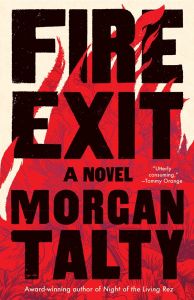

History of the World in Twelve Shipwrecks
David Gibbins
St. Martin’s Press
Since we first set sail on the open sea, ships and their wrecks have been an inevitable part of human history. Archaeologists have made spectacular discoveries excavating these sunken ships, their protective underwater cocoon keeping evidence of past civilizations preserved. Now, for the first time, world renowned maritime archeologist David Gibbins ties together the stories of some of the most significant shipwrecks in time to form a single overarching narrative of world history.
A History of the World in 12 Shipwrecks is not just the story of those ships, the people who sailed on them, and the cargo and treasure they carried, but also the story of the spread of people, religion, and ideas around the world; it is a story of colonialism, migration, and the indominable human spirit that continues today. From the glittering Bronze Age, to the world of Caesar’s Rome, through the era of the Vikings, to the exploration of the Arctic, Gibbins uses shipwrecks to tell all.
Drawing on decades of experience excavating shipwrecks around the world, Gibbins reveals the riches beneath the waves and shows us how the treasures found there can be a porthole to the past that tell a new story about the world and its underwater secrets.

There’s Always this Year: On Basketball and Ascension
Hanif Abdurraqib
Random House
While Hanif Abdurraqib is an acclaimed author, a gifted poet, and one of our culture’s most insightful critics, he is most of all, at heart, an Ohioan. Growing up in Columbus in the 1990s, Abdurraqib witnessed a golden era of basketball, one in which legends like LeBron were forged, and countless others weren’t. His lifelong love of the game leads Abdurraqib into a lyrical, historical, and emotionally rich exploration of what it means to make it, who we think deserves success, the tensions between excellence and expectation, and the very notion of role models, all of which he expertly weaves together with memoir. “Here is where I would like to tell you about the form on my father’s jumpshot,” Abdurraqib writes. “The truth, though, is that I saw my father shoot a basketball only one time.”
There’s Always This Year is a classic Abdurraqib triumph, brimming with joy, pain, solidarity, comfort, outrage, and hope. It’s about basketball in the way They Can’t Kill Us Until They Kill Us is about music and A Little Devil in America is about history—no matter the subject, Abdurraqib’s exquisite writing is always poetry, always profound, and always a clarion call to radically reimagine how we think about our culture, our country, and ourselves.

Demon of Unrest
Erik Larson
Crown PublishingOn November 6, 1860, Abraham Lincoln became the fluky victor in a tight race for president. The country was bitterly at odds; Southern extremists were moving ever closer to destroying the Union, with one state after another seceding and Lincoln powerless to stop them. Slavery fueled the conflict, but somehow the passions of North and South came to focus on a lonely federal fortress in Charleston Harbor: Fort Sumter.
Master storyteller Erik Larson offers a gripping account of the chaotic months between Lincoln’s election and the Confederacy’s shelling of Sumter—a period marked by tragic errors and miscommunications, enflamed egos and craven ambitions, personal tragedies and betrayals. Lincoln himself wrote that the trials of these five months were “so great that, could I have anticipated them, I would not have believed it possible to survive them.”
At the heart of this suspense-filled narrative are Major Robert Anderson, Sumter’s commander and a former slave owner sympathetic to the South but loyal to the Union; Edmund Ruffin, a vain and bloodthirsty radical who stirs secessionist ardor at every opportunity; and Mary Boykin Chesnut, wife of a prominent planter, conflicted over both marriage and slavery and seeing parallels between both. In the middle of it all is the overwhelmed Lincoln, battling with his duplicitous Secretary of State, William Seward, as he tries desperately to avert a war that he fears is inevitable—one that will eventually kill 750,000 Americans.
Drawing on diaries, secret communiques, slave ledgers, and plantation records, Larson gives us a political horror story that captures the forces that led America to the brink—a dark reminder that we often don’t see a cataclysm coming until it’s too late.

Wide Wide Sea
Hampton Sides
Doubleday
On July 12th, 1776, Captain James Cook, already lionized as the greatest explorer in British history, set off on his third voyage in his ship the HMS Resolution. Two-and-a-half years later, on a beach on the island of Hawaii, Cook was killed in a conflict with native Hawaiians. How did Cook, who was unique among captains for his respect for Indigenous peoples and cultures, come to that fatal moment?
Hampton Sides’ bravura account of Cook’s last journey both wrestles with Cook’s legacy and provides a thrilling narrative of the titanic efforts and continual danger that characterized exploration in the 1700s. Cook was renowned for his peerless seamanship, his humane leadership, and his dedication to science-–the famed naturalist Joseph Banks accompanied him on his first voyage, and Cook has been called one of the most important figures of the Age of Enlightenment. He was also deeply interested in the native people he encountered. In fact, his stated mission was to return a Tahitian man, Mai, who had become the toast of London, to his home islands. On previous expeditions, Cook mapped huge swaths of the Pacific, including the east coast of Australia, and initiated first European contact with numerous peoples. He treated his crew well, and endeavored to learn about the societies he encountered with curiosity and without judgment.
Yet something was different on this last voyage. Cook became mercurial, resorting to the lash to enforce discipline, and led his two vessels into danger time and again. Uncharacteristically, he ordered violent retaliation for perceived theft on the part of native peoples. This may have had something to do with his secret orders, which were to chart and claim lands before Britain’s imperial rivals could, and to discover the fabled Northwest Passage. Whatever Cook’s intentions, his scientific efforts were the sharp edge of the colonial sword, and the ultimate effects of first contact were catastrophic for Indigenous people around the world. The tensions between Cook’s overt and covert missions came to a head on the shores of Hawaii. His first landing there was harmonious, but when Cook returned after mapping the coast of the Pacific Northwest and Alaska, his exploitative treatment of the Hawaiians led to the fatal encounter.

Challenger
Adam Higginbotham
Avid Reader Press

You Like It Darker
Stephen King
Scribner

Big Moe’s Big Book of BBQ
Moe Carson
National Geographic

There Was Nothing You Could Do
Stephen Hyden
Hachette
On June 4, 1984, Columbia Records issued what would become one of the best-selling and most impactful rock albums of all time. An instant classic, Bruce Springsteen’s Born in the U.S.A. would prove itself to be a landmark not only for the man who made it, but rock music in general and even the larger American culture over the next 40 years.
In There Was Nothing You Could Do, veteran rock critic Steven Hyden shows exactly how this record became such a pivotal part of the American tapestry. Alternating between insightful criticism, meticulous journalism, and personal anecdotes, Hyden delves into the songs that made—and didn’t make—the final cut, including the tracks that wound up on its sister album, 1982’s Nebraska. He also investigates the myriad reasons why Springsteen ran from and then embraced the success of his most popular (and most misunderstood) LP, as he carefully toed the line between balancing his commercial ambitions and being co-opted by the machine.
But the book doesn’t stop there. Beyond Springsteen’s own career, Hyden explores the role the album played in a greater historical context, documenting not just where the country was in the tumultuous aftermath of Vietnam and Watergate, but offering a dream of what it might become—and a perceptive forecast of what it turned into decades later. As Springsteen himself reluctantly conceded, many of the working-class middle American progressives Springsteen wrote about in 1984 had turned into resentful and scorned Trump voters by the 2010s. And though it wasn’t the future he dreamed of, the cautionary warnings tucked within Springsteen’s heartfelt lyrics prove that the chaotic turmoil of our current moment has been a long time coming.
How did we lose Springsteen’s heartland? And what can listening to this prescient album teach us about the decline of our country? In There Was Nothing You Could Do, Hyden takes readers on a journey to find out.

Hoop Atlas
Kirk Goldsberry
Mariner Books

Explorers: New History of America in Ten Expeditions
Amanda Bellows
William Morrow
The archetype of the American explorer, a rugged white man, has dominated our popular culture since the late eighteenth century, when Daniel Boone’s autobiography captivated readers with tales of treacherous journeys. But our commonly held ideas about American exploration do not tell the whole story—far from it.
The Explorers rediscovers a diverse group of Americans who went to the western frontier and beyond, traversing the farthest reaches of the globe and even penetrating outer space in their endeavor to find the unknown. Many escaped from lives circumscribed by racism, sexism, poverty, and discrimination as they took on great risk in unfamiliar territory to exercise personal freedom. Born into slavery, James Beckwourth found freedom as a mountain man and became one of the great entrepreneurs of Gold Rush California. Matthew Henson, the son of African American sharecroppers, left rural Maryland behind to seek the North Pole. Women like Harriet Chalmers Adams ascended Peruvian mountains to gain geographic knowledge while Amelia Earhart and Sally Ride shattered glass ceilings by pushing the limits of flight.
In The Explorers, readers will travel across the vast Great Plains and into the heights of the Sierra Nevada mountains; they will traverse the frozen Arctic Ocean and descend into the jungles of South America; they will journey by canoe and horseback, train and dogsled, airplane and space shuttle. Readers will experience the exhilarating history of American exploration alongside the men and women who shared a deep drive to discover the unknown.
Across two centuries and many thousands of miles of terrain, Amanda Bellows offers an ode to our country’s most intrepid adventurers—and reveals the history of America in the process.

Fire Exit
Morgan Talty
Tin House Books

Infernal Machine
Steven Johnson
Crown

Devil’s Element
Dan Egan
W.W. Norton & Company
Phosphorus has played a critical role in some of the most lethal substances on earth: firebombs, rat poison, nerve gas. But it’s also the key component of one of the most vital: fertilizer, which has sustained life for billions of people. In this major work of explanatory science and environmental journalism, Pulitzer Prize finalist Dan Egan investigates the past, present, and future of what has been called “the oil of our time.”
The story of phosphorus spans the globe and vast tracts of human history. First discovered in a seventeenth-century alchemy lab in Hamburg, it soon became a highly sought-after resource. The race to mine phosphorus took people from the battlefields of Waterloo, which were looted for the bones of fallen soldiers, to the fabled guano islands off Peru, the Bone Valley of Florida, and the sand dunes of the Western Sahara. Over the past century, phosphorus has made farming vastly more productive, feeding the enormous increase in the human population. Yet, as Egan harrowingly reports, our overreliance on this vital crop nutrient is today causing toxic algae blooms and “dead zones” in waterways from the coasts of Florida to the Mississippi River basin to the Great Lakes and beyond. Egan also explores the alarming reality that diminishing access to phosphorus poses a threat to the food system worldwide—which risks rising conflict and even war.
With The Devil’s Element, Egan has written an essential and eye-opening account that urges us to pay attention to one of the most perilous but little-known environmental issues of our time.

Double Exposure
Robert Sullivan
Farrar, Straus, and Giroux
Timothy O’Sullivan is America’s most famous war photographer. You know his work even if you don’t know his name: A Harvest of Death, taken at Gettysburg, is an icon of the Civil War. He was also among the first photographers to elevate what was then a trade to the status of fine art. The images of the American West he made after the war, while traveling with the surveys led by Clarence King and George Wheeler, display a prescient awareness of what photography would become; years later, Ansel Adams would declare his work “surrealistic and disturbing.”
At the same time, we know very little about O’Sullivan himself. Nor do we know much more about the landscapes he captured. Robert Sullivan’s Double Exposure sets off in pursuit of these two enigmas. This book documents the author’s own road trip across the West in search of the places, many long forgotten or paved over, that O’Sullivan pictured. It also stages a reckoning with how the changes wrought on the land were already under way in the 1860s and ’70s, and how these changes were a continuation of the Civil War by other means. Sullivan, known for his probing investigations of place in the pages of The New Yorker and books like Rats, has produced a work that, like O’Sullivan’s magisterial photos of geysers and hot springs, exposes a fissure in the American landscape itself.

James
Percival Everett
Doubleday

